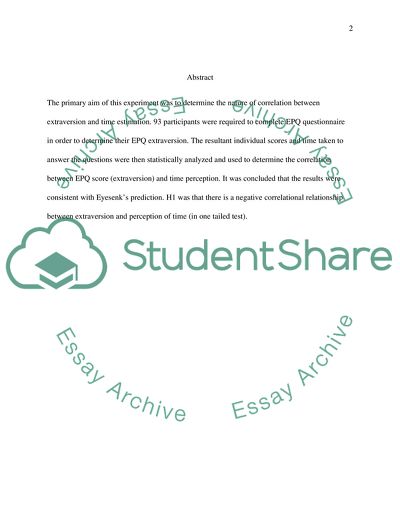Cite this document
(Correlational Study (EPQ & Time Perception) Essay Example | Topics and Well Written Essays - 1500 words - 1, n.d.)
Correlational Study (EPQ & Time Perception) Essay Example | Topics and Well Written Essays - 1500 words - 1. https://studentshare.org/psychology/1803841-lab-report-on-a-correlational-study-epq-time-perception
Correlational Study (EPQ & Time Perception) Essay Example | Topics and Well Written Essays - 1500 words - 1. https://studentshare.org/psychology/1803841-lab-report-on-a-correlational-study-epq-time-perception
(Correlational Study (EPQ & Time Perception) Essay Example | Topics and Well Written Essays - 1500 Words - 1)
Correlational Study (EPQ & Time Perception) Essay Example | Topics and Well Written Essays - 1500 Words - 1. https://studentshare.org/psychology/1803841-lab-report-on-a-correlational-study-epq-time-perception.
Correlational Study (EPQ & Time Perception) Essay Example | Topics and Well Written Essays - 1500 Words - 1. https://studentshare.org/psychology/1803841-lab-report-on-a-correlational-study-epq-time-perception.
“Correlational Study (EPQ & Time Perception) Essay Example | Topics and Well Written Essays - 1500 Words - 1”. https://studentshare.org/psychology/1803841-lab-report-on-a-correlational-study-epq-time-perception.


